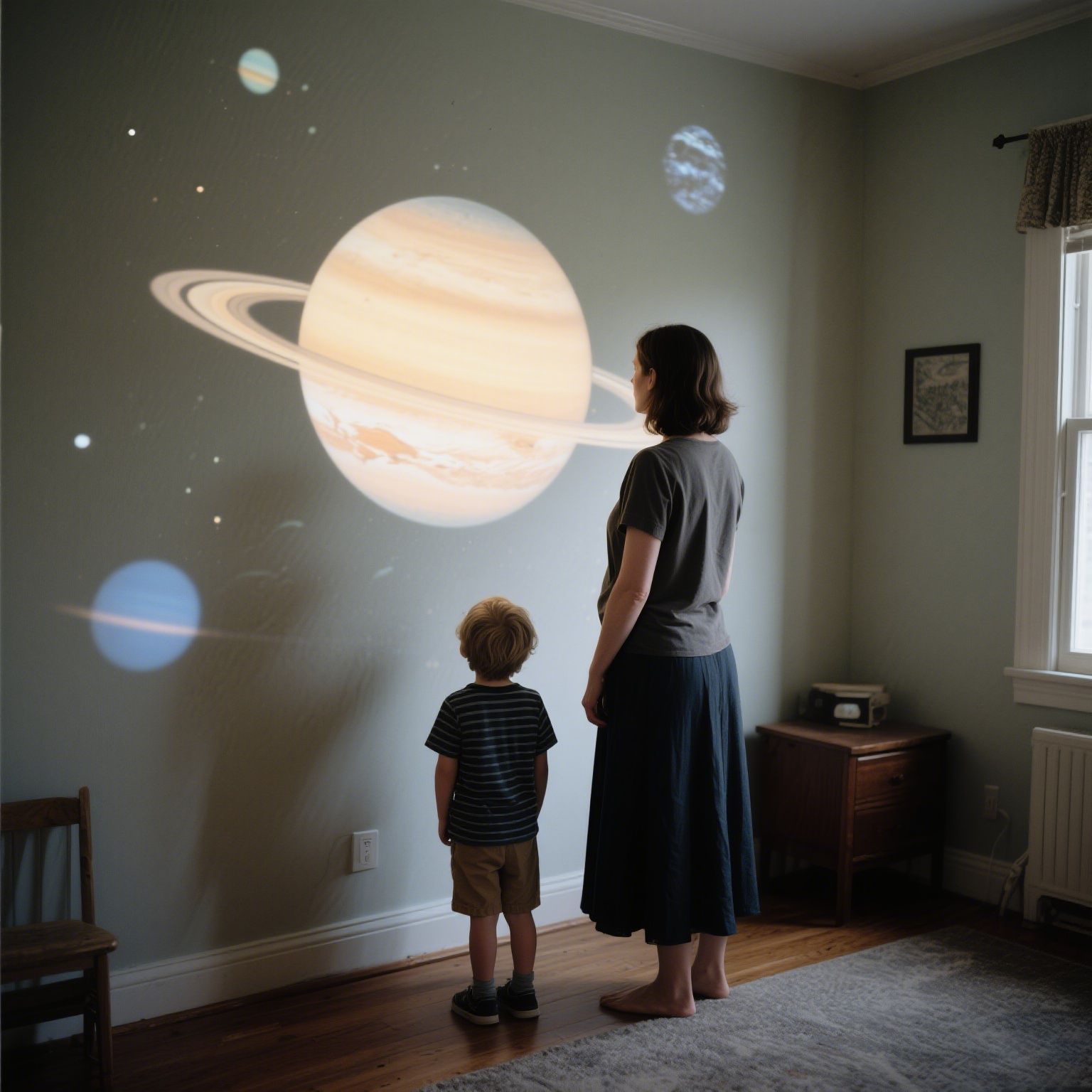
The Night My Son Tried to Catch Jupiter
Last Tuesday, I walked into my son’s room to find him perched on the bed, his arms outstretched toward the swirling galaxies projected on the ceiling. “Daddy, Europa is right there!” he excitedly said. In that instant, I understood that our $2,000 "4K" living room projector—something I had meticulously refined over years as an optical engineer—was nothing more than a flat digital candle. We had re-created Plato’s Cave: stunning images dancing across the walls, yet still confined to a two-dimensional world.

Why Flat Screens Leave Us Cold
Turns out, our brains crave depth. MIT researchers strapped VR headsets to volunteers in 2024 and found something fascinating: watching standard planetarium shows lit up only basic vision zones. But when subjects experienced true 360° starlight (like our star projector creates), their parahippocampal place area activated—the same region that fires when astronauts see Earth from space. You don’t just see them. You feel them.
How We Trick Your Brain (with Science!)
Most projectors work like flashlights: light shoots straight to the wall, dimming with distance. Twelvetooo 3D Projector? Think of it as a cosmic choreographer:
Quantum-dot lasers paint colors 200% more vividly than standard LEDs
Holographic grids bend light around your room (like water flowing around rocks)
Timed photon delivery makes Alpha Centauri feel 2.3 light-years "deeper" than nearer stars
The magic? You instinctively sense depth—no glasses needed.
Real Stories: More Than Pretty Lights
1. The Architect Who Built with Stars
Zaha Hadid’s team prototyped Dubai’s new opera house using our projector to map constellations onto foam models. "Seeing how starlight would interact with curves at 3 AM? Game-changer," lead designer Kenji admitted.

2. L.A.’s Underground Star Parties
With city skies 90% light-polluted, groups like #LostStarsLA gather in parking garages. Our projector recreates the Milky Way so accurately, astronomy professors use it to teach.
Why Most "3D" Projectors Fake It
(Quick buyer beware!)
Many "holographic" projectors just layer 2D images. True depth requires:
✅ LiDAR wall-scanning (adjusts for your beige paint vs. white drywall)
✅ Humidity sensors (compensates for L.A. smog vs. Denver’s thin air)
✅ Pupil-tracking (dimming Orion if your eyes dilate)
The Future Isn’t Flat
As astronomy professors told us: "You’re not selling tech. You’re selling awe." In 2025, we’re not counting pixels—we’re measuring Spinal Chills Per Minute (SCPM).
So next time you "watch" planets on a screen, ask: Could I see them moving more deeply?
Now you can.


Share:
How to Make a Hologram Projection: 3 Easy Steps to Create Stunning 3D Visuals in 2025
Journey Back to the Dinosaur Empire with Twelvetooo 3D Projector